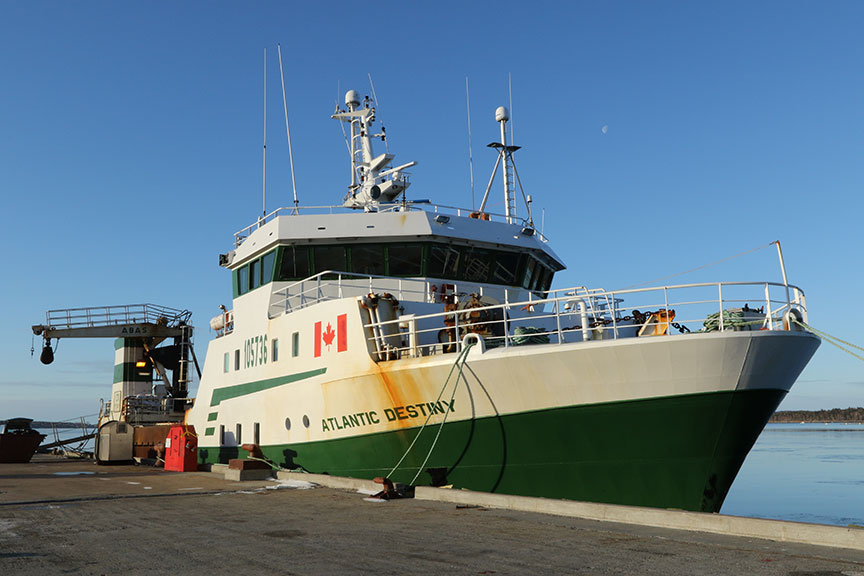Catastrophic failure of machinery
Fishing vessel Atlantic Destiny
Halifax, Nova Scotia, 200 nm SW
The occurrence
On , the fishing vessel Atlantic Destiny, with 31 people on board, sustained a breakdown in its main engine, as well as damage to its shaft alternators and machinery spaces, 200 nautical miles southwest of Halifax, Nova Scotia. The fishing vessel Atlantic Preserver towed the Atlantic Destiny to Shelburne, Nova Scotia. No injuries or pollution were reported.
Media materials
News release
Workaround method to restart main engine led to March 2017 catastrophic failure of machinery aboard Atlantic Destiny near Halifax, Nova Scotia
Read the news release
Deployment notice
TSB deploys a team to Shelburne, Nova Scotia, following accident aboard the fishing vessel Atlantic Destiny
Québec, Quebec, 17 March 2017 — The Transportation Safety Board of Canada (TSB) is deploying a team of investigators to Shelburne, Nova Scotia, following an accident aboard the fishing vessel Atlantic Destiny. The TSB will gather information and assess the occurrence.
Investigation information
Download high-resolution photos from the TSB Flickr page.
Class of investigation
This is a class 3 investigation. These investigations analyze a small number of safety issues, and may result in recommendations. Class 3 investigations are generally completed within 450 days. For more information, see the Policy on Occurrence Classification.
TSB investigation process
There are 3 phases to a TSB investigation
- Field phase: a team of investigators examines the occurrence site and wreckage, interviews witnesses and collects pertinent information.
- Examination and analysis phase: the TSB reviews pertinent records, tests components of the wreckage in the lab, determines the sequence of events and identifies safety deficiencies. When safety deficiencies are suspected or confirmed, the TSB advises the appropriate authority without waiting until publication of the final report.
- Report phase: a confidential draft report is approved by the Board and sent to persons and corporations who are directly concerned by the report. They then have the opportunity to dispute or correct information they believe to be incorrect. The Board considers all representations before approving the final report, which is subsequently released to the public.
For more information, see our Investigation process page.
The TSB is an independent agency that investigates air, marine, pipeline, and rail transportation occurrences. Its sole aim is the advancement of transportation safety. It is not the function of the Board to assign fault or determine civil or criminal liability.
